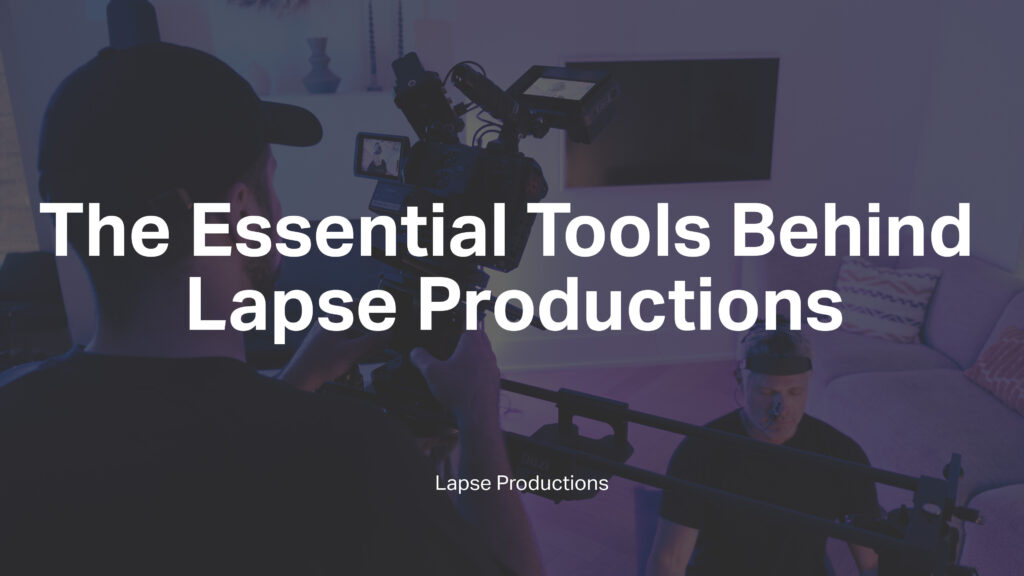Video Production Guide: Mastering the Production Phase
Embarking on the journey of video production is like setting sail into a world brimming with creativity, storytelling, and technical prowess. At the heart of this voyage lies the production phase, a pivotal moment where ideas take physical form and stories come to life before the camera. This essential guide is designed to navigate you through the complexities and nuances of the production phase, ensuring your project not only takes flight but soars. Whether you’re a budding filmmaker or a seasoned professional, mastering the intricacies of production is key to crafting compelling visual narratives that captivate and engage. Join us, Lapse Productions, as we delve into the core elements of the video production process, offering insights, strategies, and tips to transform your vision into vibrant, moving imagery.
- Planning and Preparation: Laying the Foundations in the Pre-Production Stage
- Equipment and Crew: Assembling Your Toolkit and Team
- The Filming Process: Capturing Your Vision
- An In-depth Look at an Average Corporate Production Day
- Visualizing Your Success: A Look at a Finished Product
- Challenges and Solutions: Navigating Production Hurdles
- Wrap-Up and Transition to Post-Production: Sealing the Deal
- Conclusion: The Journey Through Production
- Let's Create Your Video Today
- Frequently Asked Questions
Planning and Preparation: Laying the Foundations in the Pre-Production Stage
The journey from concept to screen begins long before the cameras start rolling, with the pre-production stage serving as the cornerstone of any successful video project. This phase is all about meticulous planning and preparation, setting the stage for a smooth transition into the heart of filming. Here’s how to ensure your project is built on solid ground:
- Script and Storyboard Finalization: At this stage, it’s crucial to finalize your script, making sure every line of dialogue and narrative beat resonates with your intended message. Parallelly, developing a storyboard will provide a visual sequence of events, ensuring that the vision is cohesive and shared among the team.
- Casting and Rehearsals: Identifying the right cast is pivotal. Once chosen, rehearsals become a key component, allowing actors to fully embrace their roles and ensuring seamless interaction on screen.
- Location Scouting and Permits: The quest for the perfect location is next. Secure these spaces and obtain all necessary permits to ensure your production doesn’t hit unnecessary snags.
- Scheduling: A detailed shooting schedule ties all these elements together, balancing the logistical needs of your project with the realities of on-the-ground production.
The pre-production stage is your blueprint for success, ensuring that every aspect of your video project is thoroughly planned and prepared for. With these elements in place, you’re ready to move confidently into the production phase, where your creative vision starts coming to life.
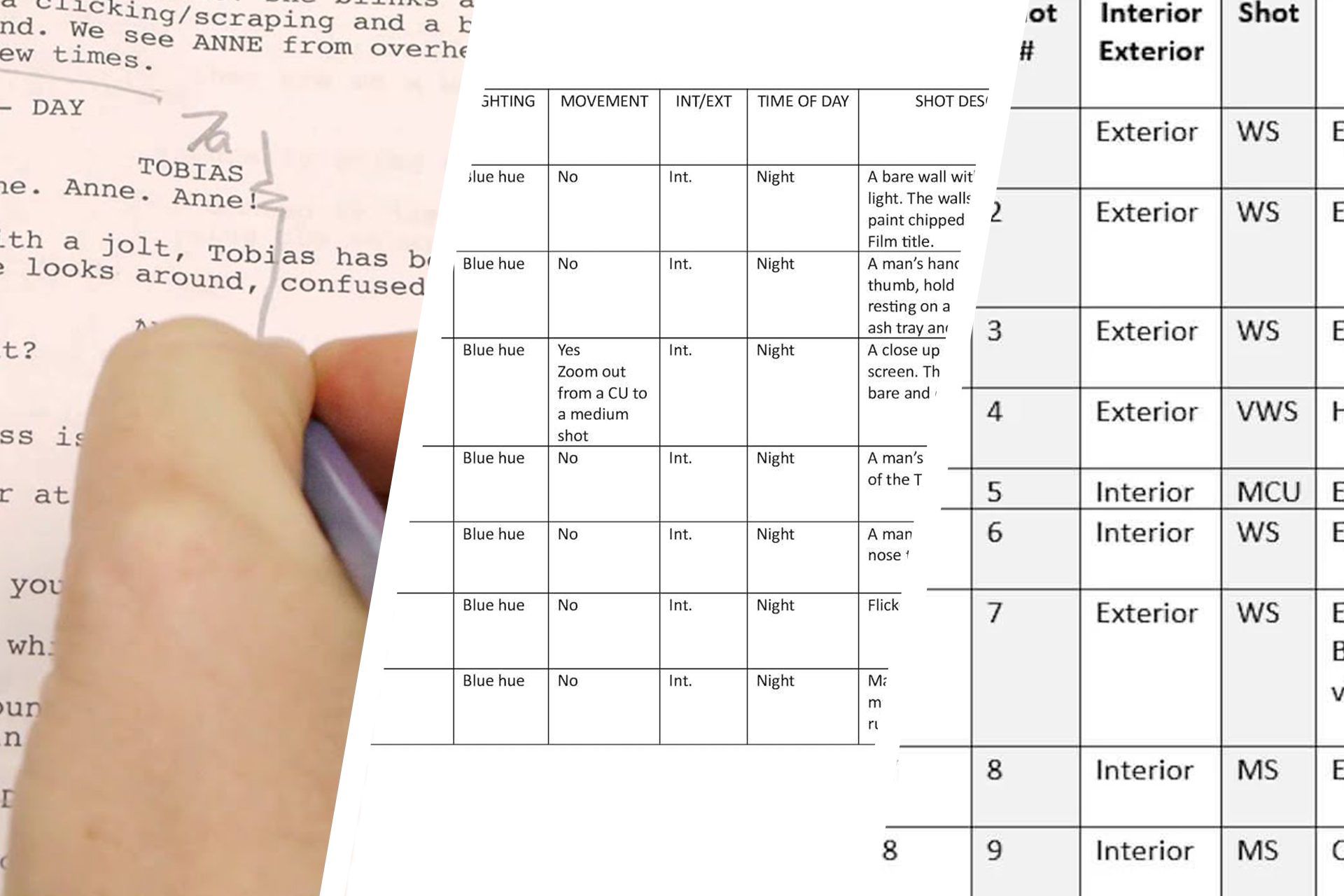
Equipment and Crew: Assembling Your Toolkit and Team
The success of the production phase hinges not only on your vision and planning but also on the tools and talents at your disposal. Here’s how to assemble the right mix of equipment and crew for your project:
- Selecting the Right Equipment: Your toolkit should include high-quality cameras, lenses for various shot types, lighting to set the mood and enhance visuals, and audio equipment to capture clear sound. Don’t forget about any specialized gear, like stabilizers or drones, that can elevate your production value.
- Assembling the Crew: Behind every great film is an even greater team. Key positions include the Director, who brings the vision to life; the Cinematographer, responsible for the visual aspects; Sound Engineers, who ensure the audio quality; and various other roles such as Production Assistants, Gaffers, and Makeup Artists, each contributing their expertise to the project.
- The Role of Collaboration: Emphasize the importance of collaboration among crew members, fostering an environment where creativity and efficiency thrive. Effective communication and a shared commitment to the project’s vision are crucial for a smooth production phase.
By carefully selecting your equipment and assembling a skilled, cohesive crew, you’re setting the stage for a production phase that not only runs smoothly but also brings out the best in your creative vision.
The Filming Process: Capturing Your Vision
With meticulous planning behind you and the right team and tools at your side, the filming process becomes the stage where your vision starts to materialize. Here’s a streamlined approach to ensure successful shoots:
- Setup and Lighting: Begin each day with a thorough setup of your scenes. Lighting plays a pivotal role in setting the tone and mood of your shots, so take the time to get it right. Use natural light to your advantage and augment with artificial lights for consistency and effect.
- Directing Actors and Managing the Set: Effective direction is key to eliciting the best performances from your actors. Maintain open communication, offering clear, concise guidance. Simultaneously, managing the set efficiently ensures that every aspect of the production moves smoothly, from scene transitions to keeping track of time.
- Shooting Scenes: Approach each scene with a clear strategy. Consider coverage, angles, and the continuity of visual storytelling. Shooting out of sequence is common, so maintain detailed notes and a checklist to ensure nothing is missed.
- Problem-solving on the Fly: No matter how well you plan, unexpected challenges will arise. Adaptability and quick thinking are essential, whether dealing with technical difficulties, environmental issues, or schedule changes. Encourage a team atmosphere where everyone feels empowered to contribute solutions.
- Ensuring Quality: Monitor footage regularly to ensure it meets your standards. Pay attention to the nuances of performance, lighting, and sound. Regular checks help avoid costly reshoots and ensure the integrity of your vision.
The filming process is both demanding and rewarding. With a focus on preparation, communication, and flexibility, you can navigate this phase effectively, capturing the essence of your story and bringing your vision to life.
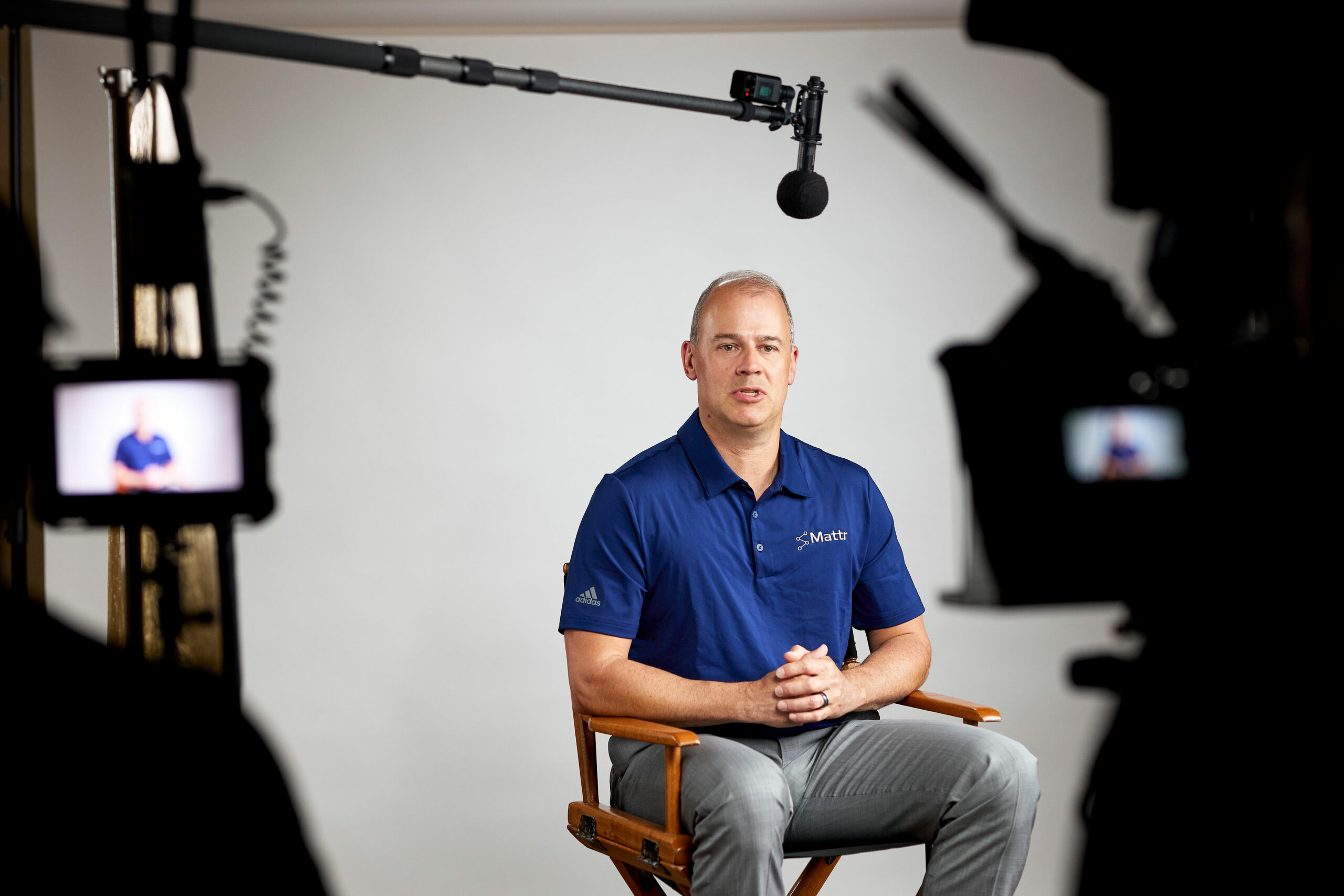
An In-depth Look at an Average Corporate Production Day
Delving into the typical flow of a corporate production day sheds light on the meticulous planning and coordination required to execute a successful shoot. From the initial arrival to the final wrap-up, every moment is calculated to maximize productivity while maintaining the highest quality standards. Here’s a detailed breakdown:
- Arrival on Location: The day kicks off with the crew arriving on location. This initial phase is critical for assessing the space, determining the setup needs, and starting the day on a positive note. The goal is to be efficient and ready for the tasks ahead.
- Setup (1-2 Hours): Setting up is a comprehensive process that typically takes between 1 to 2 hours, with 2 hours being the standard for an interview setup. This phase includes arranging the lighting, sound equipment, and camera angles meticulously to ensure the best possible recording conditions. The setup time is crucial for creating an environment that looks professional and is conducive to capturing high-quality video and audio.
- Makeup (30-45 Minutes): Makeup application varies depending on the requirements of the shoot. For full makeup, approximately 30-45 minutes are allocated to ensure that everyone in front of the camera looks their best. For light touch-ups, a quicker 15-minute session suffices. This step is vital for enhancing the visual appeal and professionalism of the participants.
- 1-Hour Lunch Break (Typically 11-12 PM): The lunch break is an essential hour of respite for the crew, offering a chance to relax, recharge, and prepare for the remainder of the shoot. It’s a time to reflect on the morning’s progress and plan for the afternoon’s schedule.
- Backup of Footage During Lunch: Utilizing the lunch break efficiently, the team ensures that all morning footage is backed up. This crucial step protects the day’s work against any unforeseen technical issues and provides peace of mind as production continues.
- Striking Down Equipment (30-45 Minutes): As the day concludes, approximately 30 to 45 minutes are dedicated to carefully dismantling and packing up the equipment. This process, known as striking, is done with care to ensure that all gear is accounted for, organized, and ready for the next production day or to be returned to the rental company if applicable.
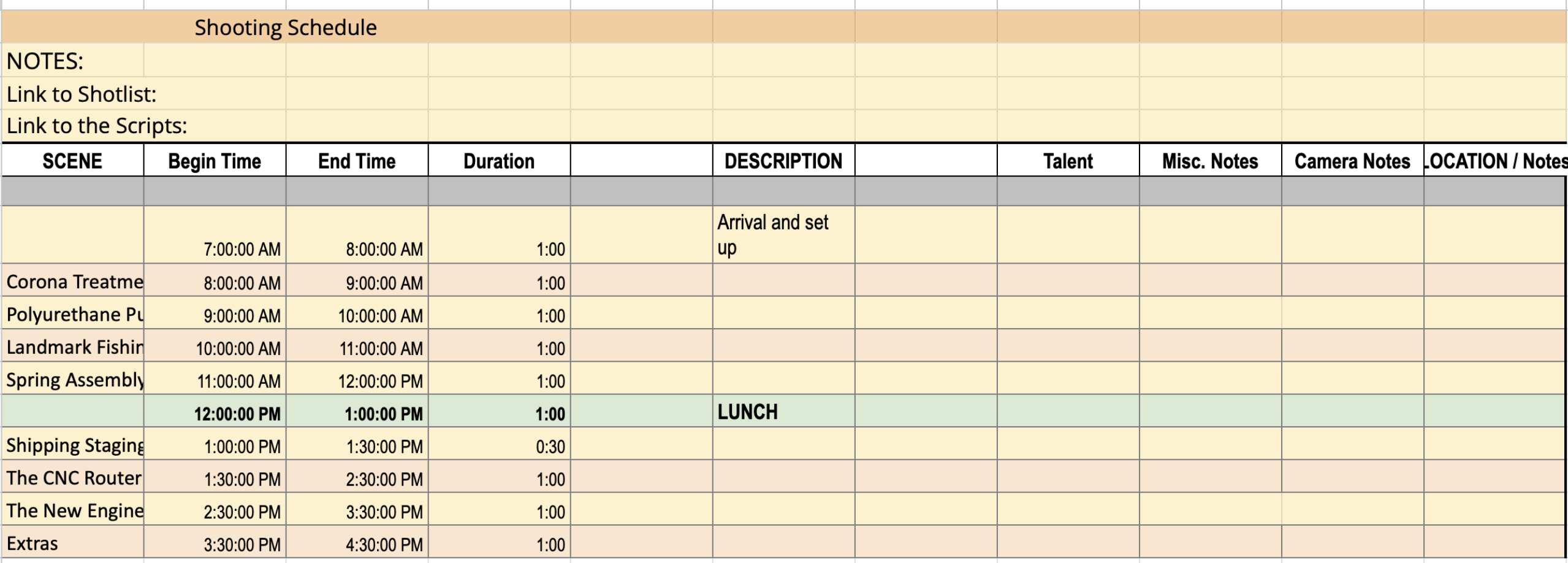
An average corporate production day is a blend of art, technical skill, and precise timing. Each phase, from setup to wrap-up, is orchestrated to ensure that every aspect of the production is executed flawlessly, reflecting the professionalism and dedication of the team behind the camera.
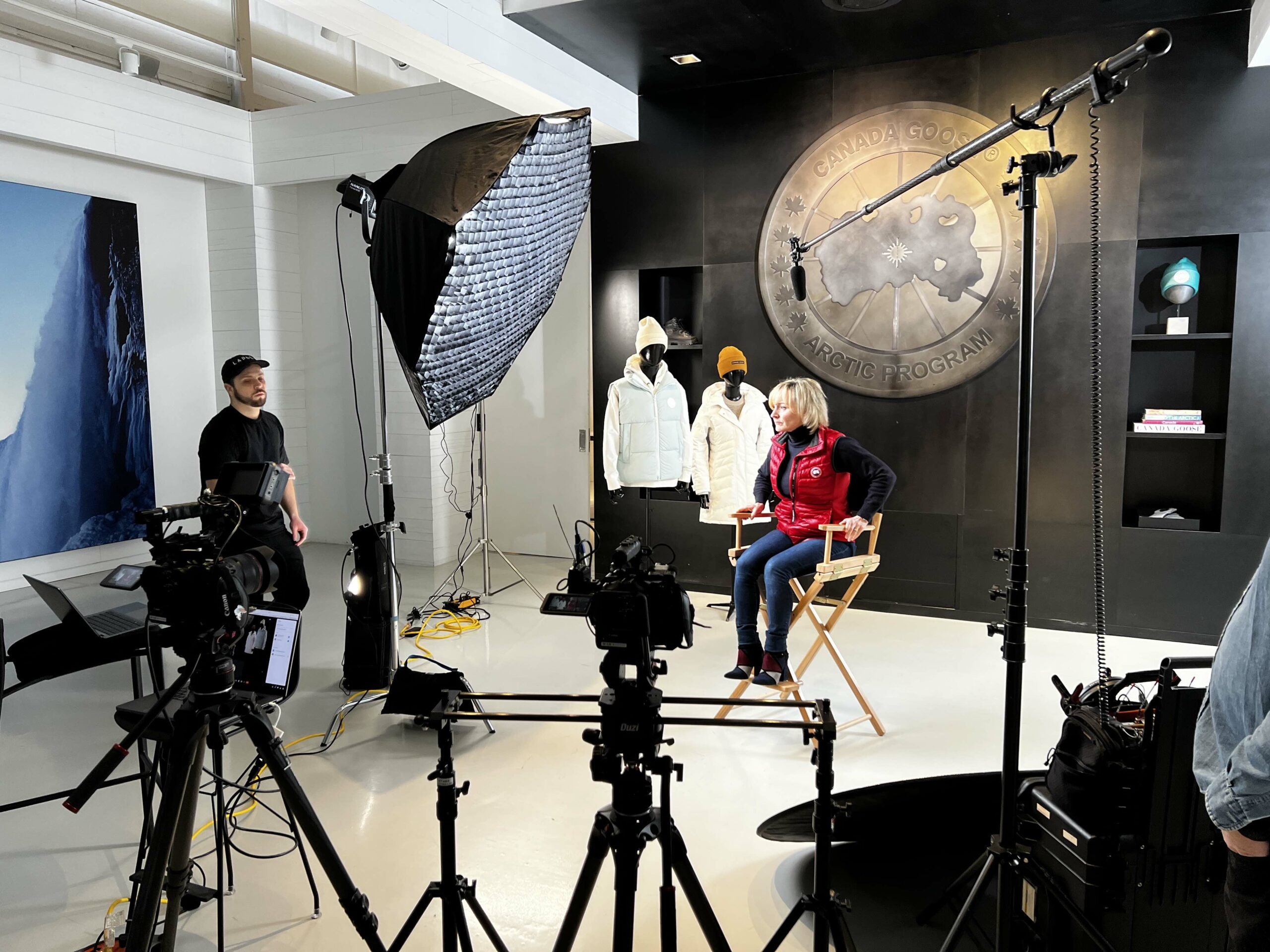
Visualizing Your Success: A Look at a Finished Product
Imagining the end result of your video production efforts can be both inspiring and enlightening. To help bring this vision to life, let’s explore an example from our portfolio that exemplifies what your project could achieve.
Promotional Videos
Explainer Videos
Product Videos
Event Videos
Challenges and Solutions: Navigating Production Hurdles
Every film production encounters its share of challenges, but foreseeing potential issues and knowing how to tackle them can make all the difference. Here are some common hurdles and strategies for overcoming them:
- Weather and Environmental Conditions: Outdoor shoots are at the mercy of the elements. Have contingency plans like alternative indoor locations or flexible shooting schedules. Protective gear for equipment and crew can also mitigate weather-related disruptions.
- Technical Glitches: Equipment failure is not uncommon. Regular checks and maintenance, along with having backup gear, ensure you’re never left in a lurch. Familiarize the crew with troubleshooting basic problems to minimize downtime.
- Scheduling Conflicts: Juggling locations, actor availability, and crew schedules can lead to conflicts. Clear communication, advance scheduling, and a bit of flexibility can help navigate these issues. Consider buffer days in your schedule for unforeseen delays.
- Budget Constraints: Financial surprises can strain production. Meticulous budgeting and a contingency fund can safeguard against unexpected expenses. Being creative with resources, like optimizing locations or borrowing props, can also stretch your budget further.
- Creative Differences: Diverging visions between team members can lead to conflict. Encourage open dialogue and maintain a focus on the project’s goals. Sometimes, a fresh perspective can enhance the project, so consider all feedback carefully.
Facing these challenges head-on with preparedness, flexibility, and creativity ensures your production not only survives these hurdles but also thrives, producing content that is both high-quality and true to your vision.
Wrap-Up and Transition to Post-Production: Sealing the Deal
As the production phase nears its conclusion, ensuring all your hard work is properly wrapped up and ready for the next stage is crucial. Here’s how to efficiently transition from production to post-production:
- Ensuring All Necessary Footage is Captured: Before disassembling sets and releasing cast and crew, double-check that every scene, angle, and piece of necessary footage has been captured. This is the time for pick-up shots or reshoots if something was missed or needs improvement.
- Dailies and Review: Throughout the production phase, reviewing dailies can give you an immediate sense of the footage’s quality. At the end of production, a comprehensive review ensures that you have all the required material, and it meets your standards.
- Organizing and Backing Up Footage: Organize your footage methodically, labeling each file clearly. Back everything up on multiple drives or cloud storage to safeguard against data loss. This organization will be invaluable during the editing process.
- Debrief with Your Team: Hold a wrap-up meeting with your key crew members to discuss the production phase. This is an opportunity to celebrate successes, address challenges faced, and gather feedback for future projects.
- Prepping for Post-Production: With all footage secured, begin outlining the post-production timeline. This includes editing, sound design, visual effects, and color grading. Ensure all team members involved in post-production are briefed on the project’s vision and timelines.
Successfully wrapping up the production phase and transitioning smoothly into post-production sets the stage for bringing your project to its final form. It’s a moment to reflect on the journey thus far and prepare for the creative tasks ahead.
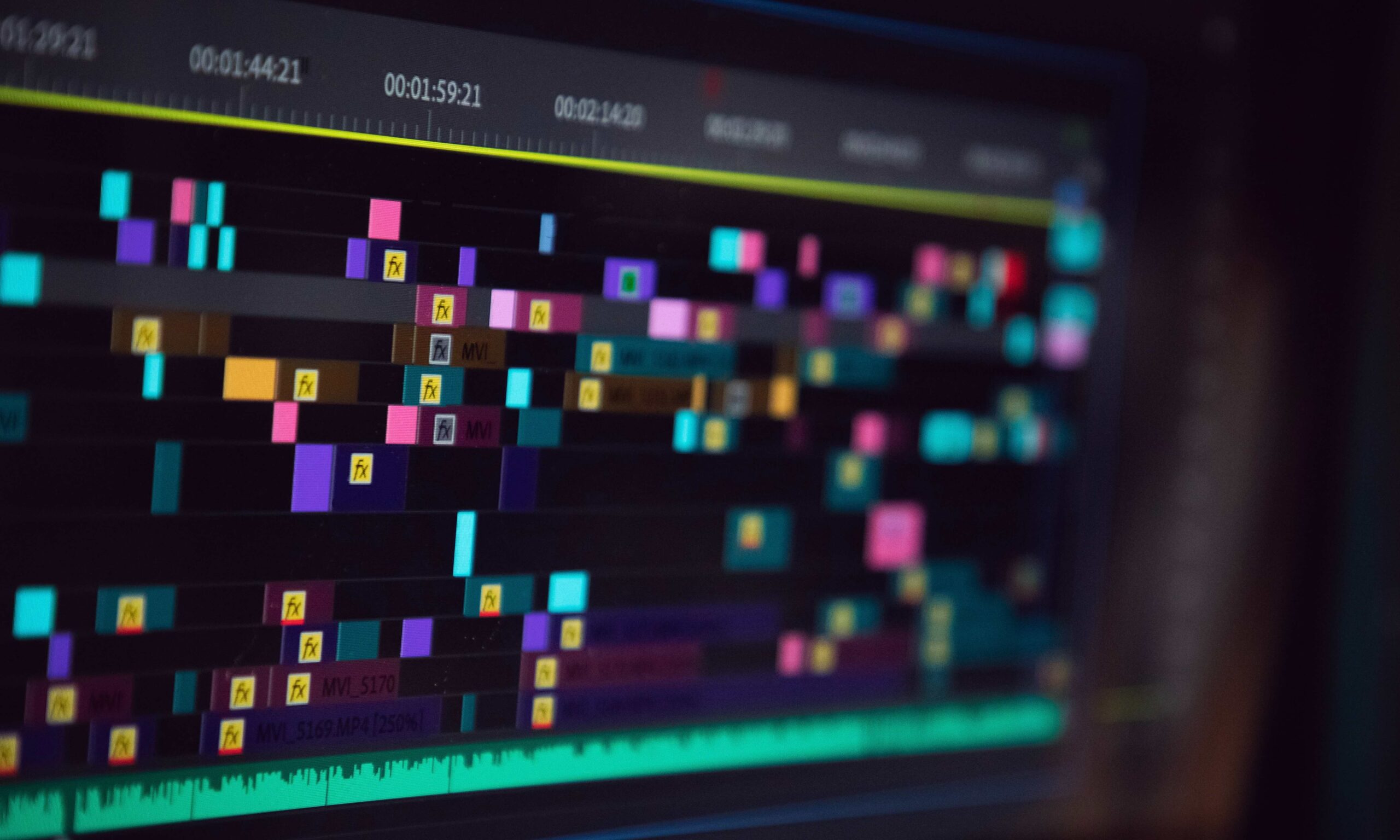
Conclusion: The Journey Through Production
Navigating the complexities of the production phase is no small feat. It’s a period marked by intense creativity, collaboration, and problem-solving, where the groundwork laid in pre-production comes to life and the raw materials for your final project are crafted. This guide has walked you through the essential steps of this dynamic phase, from the meticulous planning and preparation to the wrap-up and transition into post-production.
Remember, each project presents its own set of challenges and learning opportunities. With a strong foundation in the principles of video production, a well-assembled team, and the right tools at your disposal, you’re well-equipped to turn your creative visions into compelling visual narratives.
As we close this chapter on the production phase, remember that the journey of bringing your story to the screen is a rewarding one. The challenges you face along the way are simply stepping stones to mastering the art of video production. Looking ahead, the post-production phase offers another exciting realm of possibilities to enhance and refine your project, where your footage transforms into a polished final product.
Stay tuned for insights into navigating the post-production phase, where creativity meets technical prowess to breathe life into your visual stories.
Let’s Create Your Video Today
If you’re looking for top-notch quality, industry expertise, dependability, and competitive pricing, don’t wait any longer. Contact us now for a quote and let’s get started on your project.





